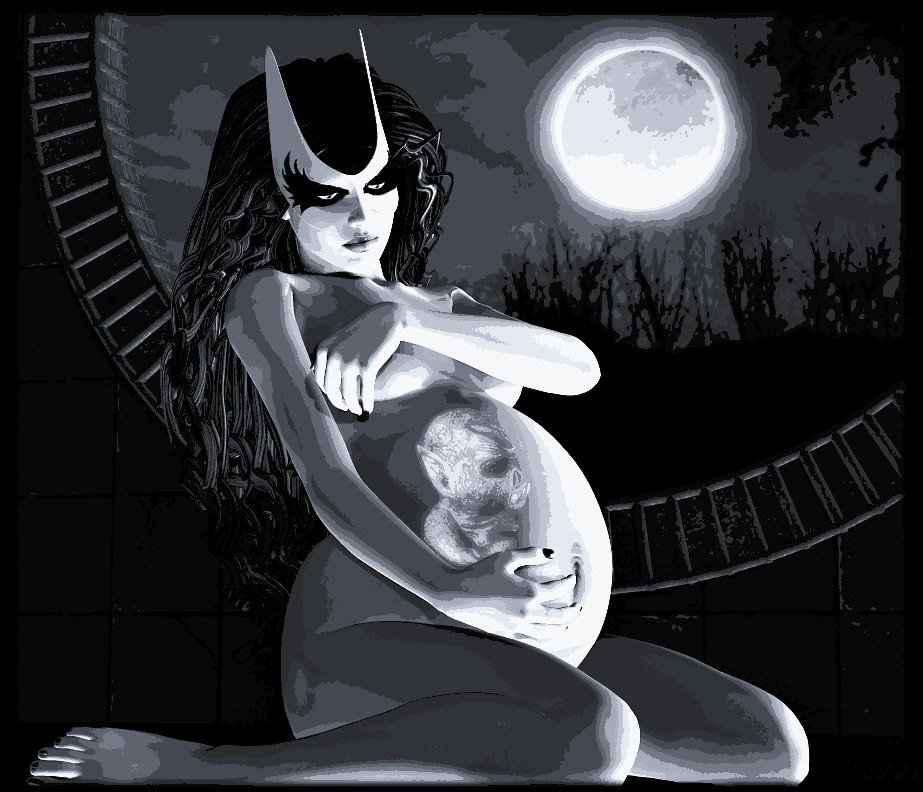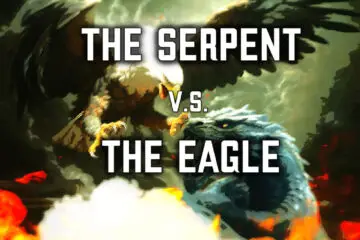A shed is an interesting entity from the demonology of multiple cultures. The plural word for these primordial horrors is the shedim, and they have been wreaking havoc on humanity for thousands of years. The legends that surround these demons go back to the beginning of accepted human history. The shedim initially originated from the Chaldean civilization. Still, much like the Canaanite culture, a lot of their myths were absorbed into ancient Hebrew mythology (which snowballed into modern Judaism, Christianity, and Islam).
In forbidden knowledge removed from mainstream scriptures, Eve was actually not the first wife of Adam in the Judeo/Chrisitan creation myth. The first woman was named Lilith, who would be called the Mother of Demons, and birthed the Shedim after being banished by God for not submitting to Adam. However, in other tales, they’re the descendants of serpents. And in yet a third version of their demonic birth from an alternative Hebrew legend, God had to stop halfway through creating them for the Sabbath and never finished. This half existence between the material world and the spirit realm caused the shedim to hold a grudge against humanity because they were favored and fully formed.

Lilith is the mother of all entities to some demonologists
Since humans rose to dominance, the Shedim have always permeated hatred towards humanity; forever brooding on their unfinished chaotic nature without any defined purpose. In any case, they’re entities of utter malevolence and insidious designs towards the unwary. The name shedim roughly translates to “destroyer,” which is suitable because of their caustic nature.
[the_ad_placement id=”manuel”]
As expected of any demon, the appearance of a shed is twisted and bizarre. The shedim somewhat resembles something humanoid mixed with animalistic qualities from a variety of animals. In the Book of Numbers, the Bible describes a shed as having the legs and feet of a rooster with a hybrid bull/human-like head.

They are very similar to classical depictions of entities in demonology across many cultures
Luckily, average people are not able to perceive a shed with their physical eyes because they mostly inhabit the world between worlds. However, those with a spiritually ascended nature are very capable of interacting with these demonic entities. Like most demons, the shedim can invade a person’s life through holes in their aura, which allows them to affect the psychology of their victim directly. Though, there is a trick to detect if a shed is present tangibly. Throw ashes on the ground, because the demon will leave behind bestial footprints.
[the_ad_placement id=”manuel”]
One of the primary supernatural abilities the shedim wield is to possess inanimate objects, and they really have no limitations in this. For this reason, shedim are usually considered to be behind haunted dolls (such as Annabel from the Conjuring series based on the real-life case of Ed and Lorraine Warren) in demonology. But, they’re also known to possess statues, keys, doors, beds, or literally anything your imagination can conjure up.

Shedim are also attracted to decay and death
For unknown reasons, shedim love cemeteries, morgues, or battlefields. Demonologists have suspected their hatred for humanity as the motive and assume they revel in the decomposition of their most hated foe. But, they are known to lurk wherever death is universal and overall have no restrictions where they choose to tread.
[the_ad_placement id=”manuel”]
It’s interesting to note that the ancient Hebrews would sacrifice to the shedim in an attempt to appease their wrath. And there was a common belief that they could purify themselves of sin by sacrificing their daughters to the shedim. Though the exact details of just what entailed in this sacrifice is lost to time.

The children of Lilith will forever haunt the children of men




0 Comments